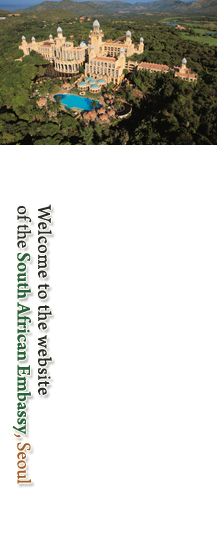
 |
 |
 |
 |
 |
 |
 |
 |
 |

| Essential Info | Business Etiquette | Customs & Culture | ||||||
Koreans will not expect you to be an expert on the nuances of their culture, but they will appreciate a show of interest in matters that are important to them. Koreans generally appreciate a foreigner's effort in expressing a thank you (gam-sa-ham-ni-da ) or a hello (an-yang-ha-say-yo) in the Korean language.
For Koreans, relationships are all important. Koreans prefer to do business with people with whom they have formed a personal connection or whereby a mutual intermediary has made an introduction. Alumni contacts are a major source of networking in Korea and a particularly well-connected Korean will have attended a prestigious Korean university.
| Meetings: |
Punctuality is appreciated and business meetings should start and finish on time.
Koreans observe a strict hierarchical code, where Koreans will generally meet to discuss business with persons of the same, parallel rank. The senior-most individuals are always introduced first, followed by younger and lower ranked participants. Koreans often greet with a slight bow and would not necessarily shake hands or kiss on the cheeks.
Questions of a personal nature may be asked, particularly concerning age, marital status, children, education, etc. These questions are not thought to be impolite, but rather to help the Koreans to recognize the appropriate social level and speech forms (degree of formality) that they should use when speaking. These questions are not meant to intrude on your privacy and Koreans will not be offended if you do not answer.
Since a consensus is important, there will usually be rather lengthy discussions before decisions are made. As a result, business negotiations will usually take much longer when compared to Western business cultures, so patience will be necessary.
| Business Cards: |
The exchange of business cards is very important and a means by which Koreans learn about the name, position and status of the other person. Businesspersons should always have their (preferably bilingual) business cards at the ready and should treat the exchange of Korean counterpart's card with respect. (Koreans can generally understand Chinese characters and as such, a business card written in Chinese characters can serve for a business trip to Korea, China and Japan.)
![]() Do’s & Don’ts
Do’s & Don’ts
- It is a sign of respect to receive and present items with both hands, followed in business etiquette by passing and receiving a card with the right hand. One should never give a card, or anything else for that matter, with the left hand as it shows disrespect.
- Do exchange cards one-by-one, individual-to-individual; use both hands if practical.
- Do read and acknowledge the full name and title of the other person. In Korea, the surname is often given first followed by a one or two syllable given name. First names are rarely used except among very close friends. Even when meeting a large group of people, it is considered polite to take a moment to read each individual's name card upon exchange.
- Never distribute (or toss) your business card in a manner similar to dealing playing cards.
- Never place a stack of your cards on the table and offer others to "take a card" from the stack.
- Never carry business cards in your wallet; nor otherwise keep them in your pant's pocket. A simple card case is quite useful.
- Don't write comments on the other person's business card, in their presence. You may write on your own name card however to add information (e.g., email, home phone number, etc.).
| Dress: |
South Koreans normally dress very formally for meetings. It is therefore advised that businesspersons make provisions to wear formal office wear or suits during meetings with their Korean counterparts.
From mid-March through late-May and mid-September through mid-November you will need a cardigan or a jacket. During summer, June through August, it can be humid and hot. Late November through early March you must be prepared for the cold. A scarf, gloves and snow shoes are recommended for January and February, and remember that it snows at higher elevations in Korea.
